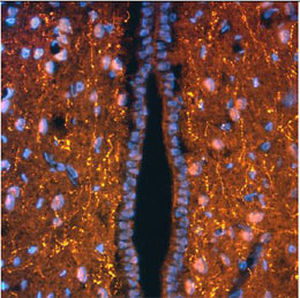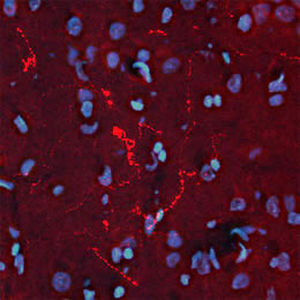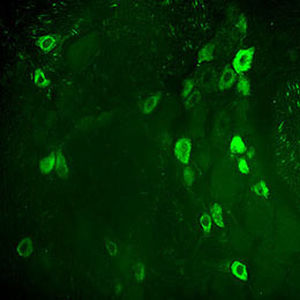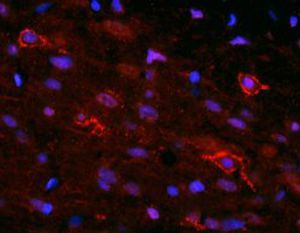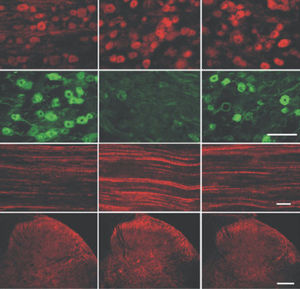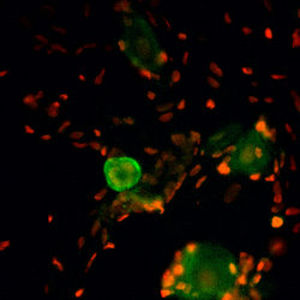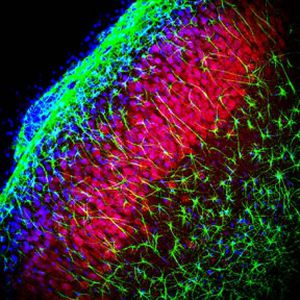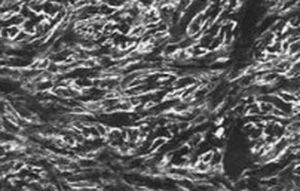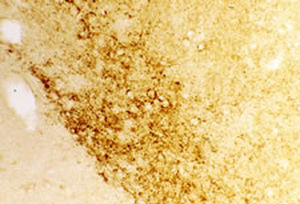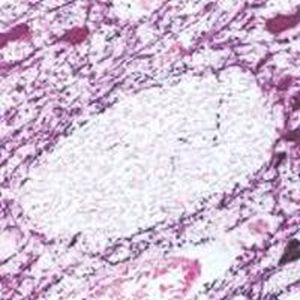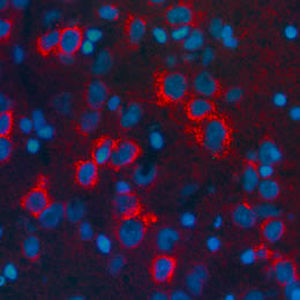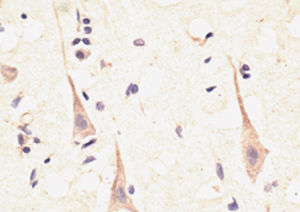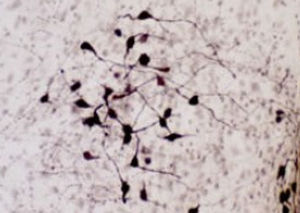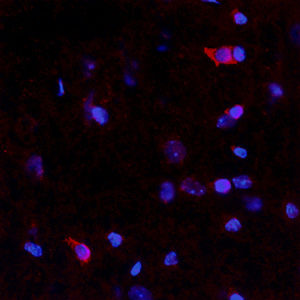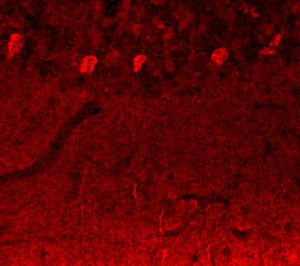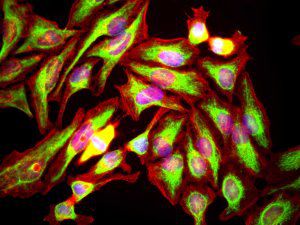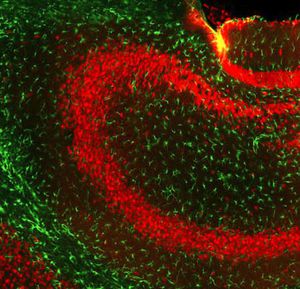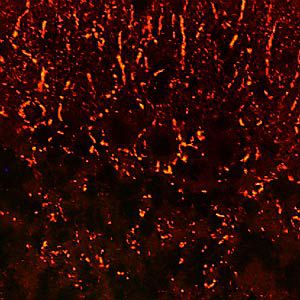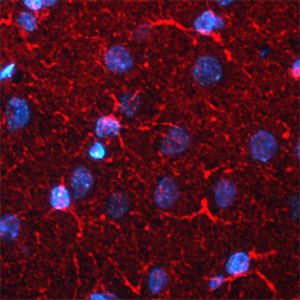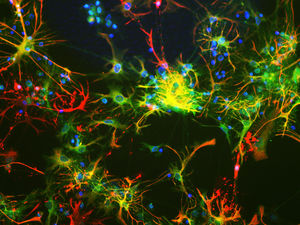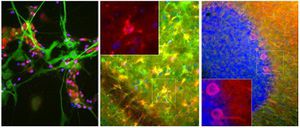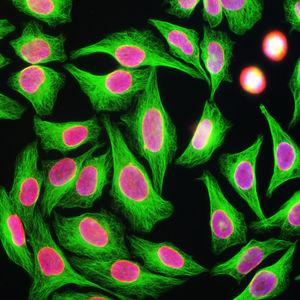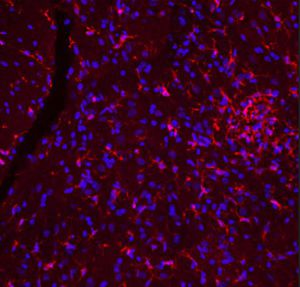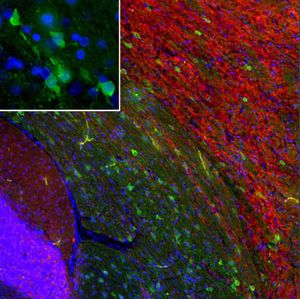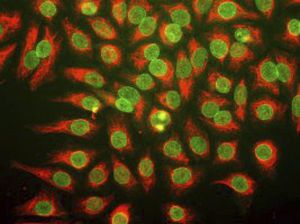
Alpha-internexin reagent MO22154monoclonal antibodyIgGfor scientific research
Add to favorites
Compare this product
Characteristics
- Type
- monoclonal antibody, IgG
- Applications
- for scientific research, for Western blot, immunohistochemistry, for immunofluorescence, for immunocytochemistry
- Format
- liquid
- Tested parameter
- for alpha-internexin
- Origin
- mouse-based
Description
α-internexin is a Class IV intermediate filament protein originally discovered by two different groups of researchers as it copurifies with NF-L, NF-M and NF-H, the then better known major neurofilament “triplet” subunits. It is expressed only in neurons and in large amounts early in neuronal development, but is down-regulated in many neurons as development proceeds. Some neurons express α-internexin in the absence of NF-L, NF-M and NF-H, though most mature neurons express all four proteins. This α-internexin antibody has been shown, in peer reviewed publications, to reveal the upregulation of α-internexin in facial neurons following experimental axotomy followed by down regulation on axonal regeneration. It is also the standard reagent used to identify and classify patients with neurofilament inclusion body disease, a specific form of frontotemporal lobar dementia. Finally, it has been used to confirm the presence of circulating antibodies to α-internexin in the blood of certain patients with endocrine autoimmunity.
Catalogs
MO22154
1 Pages
Related Searches
- Molecular biology reagent kit
- Research reagent kit
- Analysis medical software
- Protein reagent kit
- Immunology reagent
- Antibody
- Laboratory software
- Lyophilized reagent kit
- Serum reagent kit
- Immunohistochemistry reagent kit
- Enzyme reagent
- Scientific research reagent kit
- Monoclonal antibody reagent kit
- Western blot reagent kit
- Research software
- Immunofluorescence reagent kit
- Cytokine reagent kit
- Polyclonal antibody
- Growth factor reagent kit
- Mouse-based reagent
*Prices are pre-tax. They exclude delivery charges and customs duties and do not include additional charges for installation or activation options. Prices are indicative only and may vary by country, with changes to the cost of raw materials and exchange rates.



